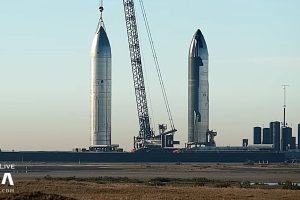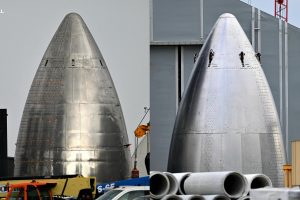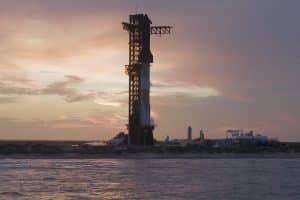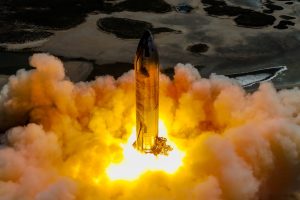SpaceX has released concrete information about Starship and Super Heavy’s first orbital flight test via FCC regulatory filings.
Elon Musk, the CEO of SpaceX, denied a stunning NASASpaceflight.com story earlier this year that the organization was working on launching Starship into orbit by July 2021 – a feat that would be nothing short of miraculous. SpaceX has requested permission from the FCC to communicate with Starship and Super Heavy before and during an inaugural “orbital test flight” scheduled for no earlier than (NET) June 20th, less than two months later.
Oddly, the FCC application indicates some truly unusual plans relative to the rest of SpaceX’s intensive Starship test and launch campaign.
“The Starship Orbital test flight will originate from Starbase, TX. The Booster stage will separate approximately 170 seconds into flight. The Booster will then perform a partial return and land in the Gulf of Mexico approximately 20 miles from the shore. The Orbital Starship will continue on flying between the Florida Straits. It will achieve orbit until performing a powered, targeted landing approximately 100km (~62 miles) off the northwest coast of Kauai in a soft ocean landing.“
SpaceX FCC STA Request – 13 May 2021
In a nutshell, Starship’s first orbital launch attempt aims to bring an expendable prototype into space for a 90-minute one-orbit mission, which means Starship will orbit Earth once before performing a deorbit burn and attempting its first reentry. If all goes according to plan, which is far from certain, the Starship prototype would make a “soft ocean landing” 100 kilometers (62 miles) off the coast of Kauai, Hawaii. Back in the Gulf of Mexico, SpaceX’s first flightworthy Super Heavy booster will launch alongside Falcon 9, separate from Starship, conduct a flip and boostback burn towards Texas, and “land approximately 20 miles [32 km] from the shore,” according to SpaceX.
The FCC STA order, according to SpaceX, is intended to “authorize Starship test vehicle communications from the launch pad at Boca Chica TX and the experimental recovery operation” after the launch, but it makes no mention of recovery assets in the Gulf of Mexico, leaving it unclear if the first flown Super Heavy will be recovered or will also conduct a “soft ocean landing.” SpaceX made the sensible decision not to attempt to recover the first orbit-proven Starship in order to optimize speed, particularly given the difficulty of achieving a completely successful orbital launch, coast, and reentry on the first attempt.
However, Super Heavy can perform a trick that is nearly similar to the Falcon booster landings that SpaceX has perfected 75 times in the last five years. The landing of Super Heavy is referred to as a “touchdown” in an included “timeline of events” for the orbital launch, while Starship’s “soft ocean landing” is referred to as a “splashdown,” raising expectations that the booster would attempt to land on an unspecified platform a few dozen miles off the Texas coast.
We won’t have to wait long to find out, given SpaceX’s requested “service start date” of June 20th. SpaceX has yet to begin stacking the first flight-ready Super Heavy booster prototype, so the NET June 20th deadline is much more likely to fall into July or August. Regardless, a launch of some kind of orbital Starship before the end of 2021 will be nothing short of a feat of engineering and program management for SpaceX. Stay tuned for more information as SpaceX’s orbital launch pad, Starship concept, and booster approach flight readiness.





